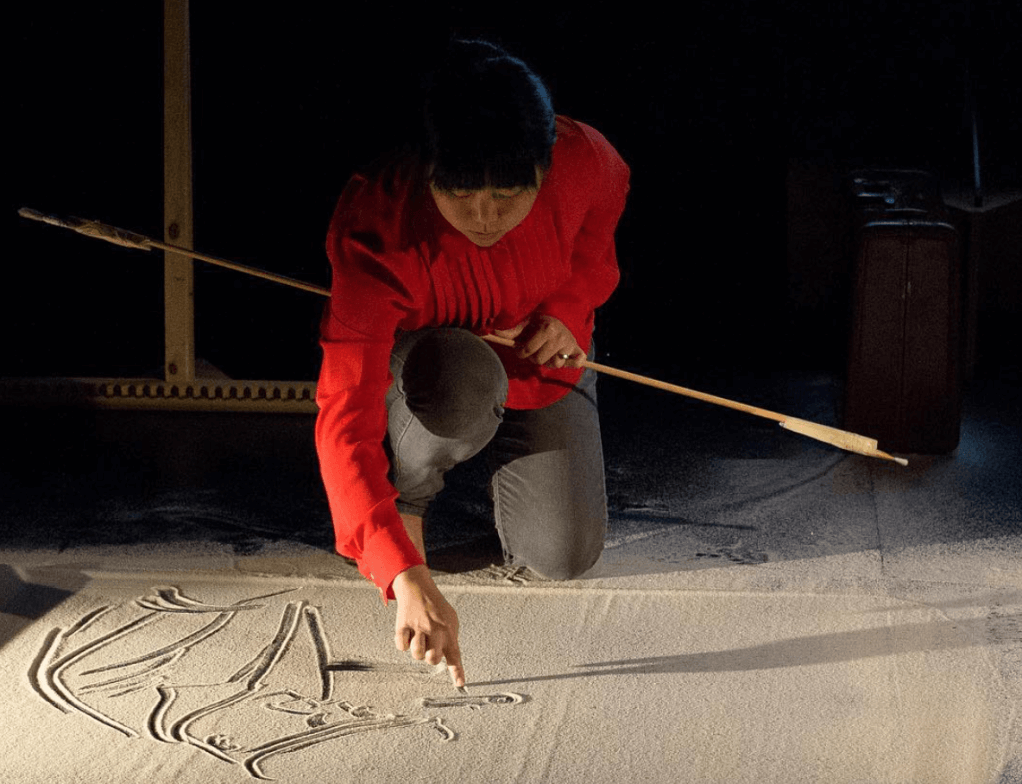There is no doubt that “The Ephemera Trilogy” is a visually stunning piece of theater. It combines puppetry, shadow art and sand work to create a very unique experience.
It is clearly a very personal piece for writer/performer Maeda, as it centers around her own family’s experience immigrating to the US from Japan. It’s a collection of three unique stories, connected by their roots in Japanese culture.
The first act is certainly the strongest; the stories are intriguing, universal, and well told. Not only does Maeda explore traditional Japanese tales, she also explains the impact they had on her family-a captivating combination. The use of shadow and puppetry is particularly strong at the beginning, creating a transient and mythical mood.
The story of the crane wife is particularly memorable. It is the story of a crane who gets saved by a generous farmer. In gratitude she turns into a beautiful woman and becomes his wife. They fall upon very hard times, and she offers to help him weave, but asks him to promise that he will never look at her while he does it. There is one beautiful moment where we see both Maeda as a performer and as her “crane” shadow, showing us both her primal, animal side, and her humanity. This whole story is succinctly inter-generational, exploring the impact one story has had on Maeda’s grandmother, mother and her “child”.
Maeda breaks the fourth wall, busting through the curtains both physically and metaphorically, taking a moment to address the creation of the production and the effect it’s had on her personally.
The second act, however, leaves something to be desired. It is a much more detailed story of Maeda’s family and their experience in Japanese internment camps.
Unless you have an established interest in her family, it is difficult to really engage with the piece. The audience is offered a lot of details about the characters, but instead of humanizing them, it weighs the story down with so many unnecessary details that it becomes very dry. Additionally, the connection between the visual and the audio is not always clear which further dissipates the emotional intensity.
The highlight of the second act is watching Maeda create sand art on stage, although this lacked the dynamic energy that made the shadow work in the first act so beautiful. The sand art is doubtlessly impressive; we see her create portraits, landscapes and abstract work. There is one moment where sand falls through her suitcase, coating the floor, an interesting commentary on impermanence.
It may be slightly unusual to omit mention of performers in a theater review, but with the exception of some voiceover work and Maeda herself, there were no live performers. It is certainly interesting, and blurs the line between visual and performance art, creating an almost cinematic experience. The piece is so visually stunning that it carries this attention beautifully, however, it does further diminish its personal impact.
Overall, Maeda combines many different aspects to create a cohesive whole which is ambitious, unique and effective. This is a very unusual piece of theater that is recommended for anyone that enjoys visual art, exploring Japanese culture, or wants a change of pace from the traditional theater experience.

